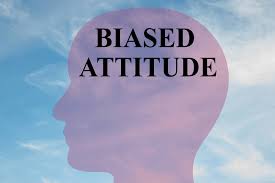First posted on Ashton Applewhite’s website in 2010, this is an excerpt from a talk she gives called “This Chair Rocks: How Ageism Warps Our View of Long Life.” We think it’s a great way to introduce an articulate, passionate writer whose work will appear from time to time at the Silver Century Foundation.
In 2007 I started interviewing people over 80 who were in the workforce. At the same time, I was reading and writing about longevity. To my surprise, the more I learned, the greater the discrepancy that emerged between my grim notion of late life and the lived reality. I knew I was onto something.
What were some of my misconceptions?
The grimmest was that I’d end my days drooling under a bad Van Gogh print in some ghastly, institutional hallway. In fact, the percentage of Americans over 65 in nursing homes is 4 percent, down from 5 percent over the last decade.
I imagined I’d be sick and helpless. But the vast majority of older Americans enjoy independent lives. People get chronic illnesses, but they live with them.
Another preconception was that dementia lurked. One in eight Americans over 65 has Alzheimer’s. It’s a terrifying prospect. But the real epidemic is anxiety about memory loss.
Remember the 4 percent of people over 65 living in nursing homes? Of the 96 percent who are still in the community, the vast majority continue to function effectively and live independently. About 20 percent of people in their 90s seem to escape cognitive decline altogether and continue to perform as well as middle-aged people.
I also assumed that old people were depressed. Because, duh, they were old, and they were going to die soon. It turns out that older people enjoy better mental health than the young or middle-aged. In fact, study after study, in the United States and around the world, shows that people are happiest at the beginnings and the ends of their lives.
Weirdly, counterintuitively, exhilaratingly, the more I learned about old age, the less terror it held. This applies across the board: AARP and the University of Southern California did a study in 2009 that established that “less knowledge about aging is associated with greater anxiety about the aging process.”
The vast majority of respondents in the study were aware that older Americans can learn, are either working or want to work, and feel healthy. But most of them also thought of older people generally as “senile,” “pretty much alike” and having “no capacity for sex.” No wonder they’re nervous!
We see old age only through the lens of loss. From the outside, what people lose as they age is more obvious than what they gain. The losses are real and wrenching. But from the inside, the experience is different. People adjust. Life remains very much worth living.
So why do so many people assume that everyone in a retirement home is the same age? (Old.) Or that older people are “pretty much alike?” Because of ageism: discrimination and stereotyping on the basis of a person’s age. It’s why I started a Q&A blog called Yo, Is This Ageist? Go ahead, ask me.
- It’s ageist to assume that all older people are frail—or wise, or that “kids are like that.” Ageism cuts both ways.
- It’s ageist when some clown calls me “young lady” and expects me to feel complimented.
- It’s ageist—and disableist—when olders refuse to use wheelchairs or walkers because the stigma is so great—even if not using them means they can never leave home.
Ageism is to age what racism is to race. Historian Robin D. G. Kelley says, “Race was never just a matter of how you look, it’s about how people assign meaning to how you look.” Like race, age is a socially constructed idea that has changed over time and that serves a social and economic purpose.
Ageism is pervasive and corrosive, yet most people can’t even define it. They have no sense of how it’s internalized or plays out in the culture at large, and how it distorts and demeans the life course. America’s relentlessly youth-centric drumbeat drowns out all but the negative about life after 65. Or after 50, when men dump their wives for fertile trophy versions. Or 40, when workplace discrimination starts to kick in. Or 30, when women freak out about being over the hill. As age scholar Margaret Gullette writes, “Aging has become the new fate worse than death.”
I’m not saying that getting older is a bowl of cherries. We’re all worried about some aspect of getting old, whether it’s running out of money, or getting sick or ending up alone—and those fears are legitimate and real. But it never dawns on most of us that the experience of reaching old age—or middle age, or even aging past youth—can be better or worse depending on the culture in which it takes place. The more clearly we see these social forces at work, the easier it is to envision alternative, more positive, more accurate narratives.
The baby boom generation now being denigrated as a “gray tsunami”—how about “gray wave,” or even “gray bloom”?—came of age in an era dramatically defined by the civil rights and women’s movements. It’s high time to mobilize against discrimination and stereotyping on the basis of age.



